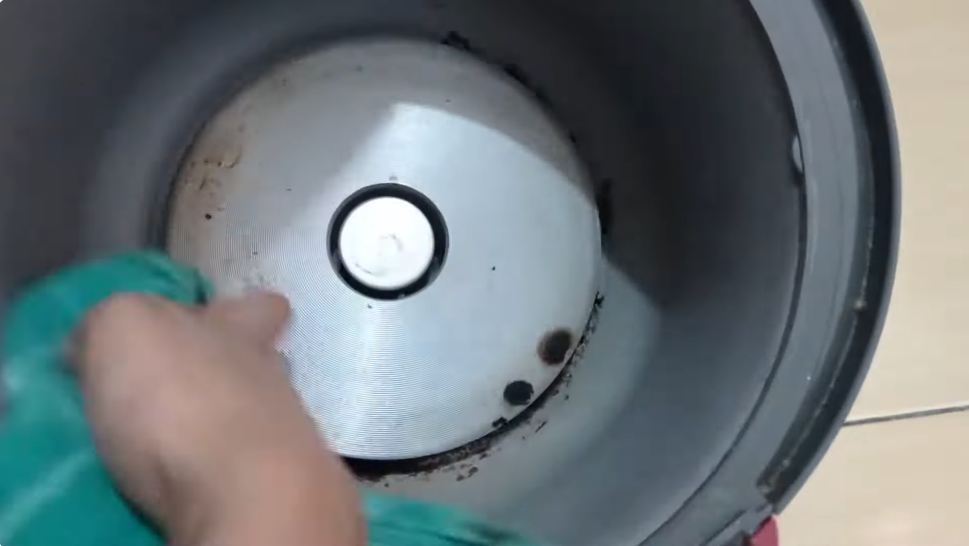foto: YouTube/Sasa's World
Brilio.net - Cooking rice is a mandatory activity for a number of people every day. There are many ways to cook rice, one of the easiest is to use a rice cooker, because it is automatic. However, the more often it is used, the faster the rice cooker gets dirty, especially at the base.
Sometimes, there are leftover rice crust stains or water droplets on the bottom of the rice cooker that need to be cleaned. Not only that, burnt spots often appear resulting from the hot temperature of the rice cooker during the cooking process. Many people clean it by applying toothpaste, then brushing until clean.
However, there are still other ways to clean stubborn limescale at the bottom of a rice cooker that are no less effective, you know. This method was shared by netizens on the Sasa's World YouTube account. After all, he only needs one simple kitchen ingredient that everyone definitely has at home.
How to clean stubborn limescale at the bottom of a rice cooker.
First, scrape off any thick crusty spots at the bottom of the rice cooker. After that, clean it using a clean cloth. You can also clean the edge of the rice cooker this way.
"I will use an old toothbrush in the first stage to remove the crust," said the netizen known as Sasa, quoted by BrilioFood from YouTube Sasa's World on Thursday (22/2).

photo: YouTube/Sasa's World
After that, prepare a sponge to wipe off the remaining stubborn crust. Dampen a sponge with a little water, then add a little dish soap to the sponge. Yup, dishwashing soap is the main ingredient for practicing how to clean stubborn limescale at the bottom of this rice cooker.
Immediately rub the sponge all over the bottom of the rice cooker until the stains are gone. Make sure you add just a little water to the sponge, because if you add too much, you risk damaging the rice cooker machine. If all the limescale stains have disappeared, immediately wipe and dry the base of the rice cooker with a clean cloth or napkin.

photo: YouTube/Sasa's World
How about it, it's really easy to clean the stubborn crust at the bottom of this rice cooker, right? Taking a peek at Sasa's World's YouTube upload, it's true that not many netizens have left comments, but this video has been watched more than 16 thousand times, you know.
Simple ingredients for cleaning dishwashing sponges.
The dishwashing sponge used to clean kitchen furniture also needs cleaning to be germ-free. Here are the ingredients you can use:
White vinegar is an effective ingredient for cleaning germs and bacteria. Vinegar has antimicrobial properties that can help kill germs on sponges.
How to use:
- Soak the sponge in a solution of warm water with a few tablespoons of white vinegar.
- Let the sponge soak for at least 15-30 minutes.
- Rinse the sponge with clean water.
Bleach solutions can kill many types of germs and bacteria on sponges, making them safe to reuse.
How to use:
- Mix 1 tablespoon of bleach with 1 liter of water.
- Soak the sponge in this solution for about 5 minutes.
- Rinse the sponge thoroughly with clean water.
Tea tree oil has strong antimicrobial and antifungal properties, making it effective for cleaning sponges and killing germs.
How to use:
- Mix a few drops of tea tree oil with warm water.
- Soak the sponge in this solution for a few hours or overnight.
- Rinse the sponge with clean water before using it again.
Hydrogen peroxide is an effective cleaning agent for killing germs and bacteria.
How to use:
- Soak the sponge in a solution of warm water with a few tablespoons of hydrogen peroxide.
- Let the sponge soak for at least 15-30 minutes.
- Rinse the sponge with clean water.
A combination of vinegar and hydrogen peroxide can be a powerful option for cleaning sponges of germs.
How to use:
- Mix equal amounts of white vinegar and hydrogen peroxide.
- Soak the sponge in this mixture for 15-30 minutes.
- Rinse the sponge with clean water.
(brl/tin)